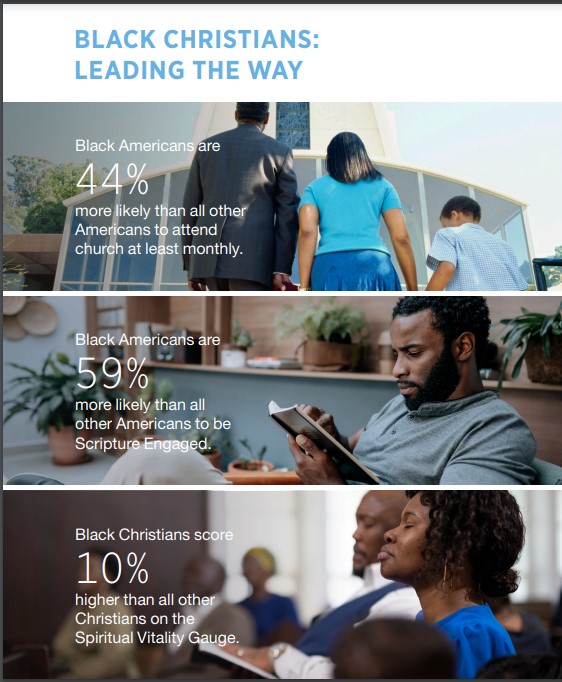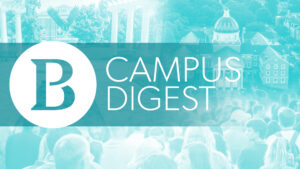
PHILADELPHIA (BP) – African American Christians score 10 percent higher than all other Christians in spiritual vitality, a new scale of holistic spiritual health the American Bible Society introduced in its 2023 State of the Bible report.
The Spiritual Vitality Gauge (SVG) measures spiritual health through a set of nine concise questions focused on beliefs, practices and faith in action among self-identified Christians, the ABS said July 13 in releasing its findings in the report’s fourth chapter.
The higher score among African Americans, when compared to whites and Hispanic Americans, should not be surprising, the ABS said, as Blacks lead the way on nearly every measure of spiritual life the study uses.

“State of the Bible research shows overwhelmingly that Black Christians lead the way on virtually every desirable metric. This group has a lot to teach the rest of the American church,” the ABS wrote. “People in this group are more likely to attend church weekly, to read the Bible, to be Scripture Engaged, to be ‘Bible Centered,’ and now to display spiritual vitality in their lives.”
Religion has been a source of resiliency for many racial and ethnic groups, the ABS said, referencing a 2020 article from researchers at Case Western University based on a study of historical and contemporary literature. The church’s appeal to Blacks is both spiritual and practical, the Case Western article asserts.
“Historically and contemporaneously, the Black church, in addition to being a religious institution, is a social, cultural, civic, educational and political institution that is central to Black communities,” the article reads. “Because of social, economic, and institutional disenfranchisement, Back Americans have traditionally had difficulty accessing public and private services. As a result, Black churches tend to offer a greater number of community programs and mental health services than white churches.”
Specifically, Blacks registered 76 on the spiritual vitality scale of 0-100, at least 10 percent higher than the 68 among Hispanic Americans and the 69 among whites.
The ABS also explores the various ways people connect with God in the study’s fourth chapter, incorporating nine spiritual temperaments bestselling author and former Southern Baptist pastor Gary Thomas presented in the 1996 book “Sacred Pathways.”
Naturalists, those who connect best with God while in nature (32 percent); ascetics, connecting most with God while alone, reading the Bible or praying (14 percent); and contemplatives, connecting with God when they sense He is touching their heart (11 percent), ranked as the top three temperaments among study participants. Thirteen percent of those studied feel no connection to God.
Consequently, those who connect best with God in nature were least likely to attend church services, with 72 percent almost never attending church and only 11 percent attending weekly. Contemplatives scored highest in church attendance, with 48 percent attending weekly and 31 percent attending almost never. Among ascetics, 42 percent attend weekly.
In addition to church attendance, the ABS studied how spiritual temperaments impact spiritual commitment, beliefs about God and scriptural engagement.
Evangelical Protestants and historically Black Protestants were more prevalent among ascetics, with the temperament accounting for 23 percent of both groups; followed by naturalists, accounting for 22 percent of Evangelical Protestants and 21 percent of historically Black Protestants.
The State of the Bible annually looks at the Bible, faith and the church in America. The ABS collaborated with the University of Chicago’s National Opinion Research Center (NORC) in designing the study conducted online and via telephone to NORC’s AmeriSpeak Panel. The 18-minute survey, conducted Jan. 5-30, produced 2,761 responses from a representative sample of adults 18 and older within the 50 states and D.C.
The first four chapters of the study are available here.














